A useful risk register template is a document for project management and risk management. Most managers use this tool for checking the potential risks of their project. However, this is such a tool you need to know its use. Further, how you can save your next project from spoiling.
Risk Register Templates:
The risk register document is very important in project management and risk management. Similarly, you can track the risk and record it in the register. There are different risk register documents available free from the internet. You can use it as per the nature of your project. These templates will work as an efficient tool for risk management.
What is a Risk Register?
A project risk register is a tool that most managers use to check the potential impact on their project. Risk management is an important component of project management. Through this, you trace the potential problem and setbacks of your project. The risk register is also famous for the name of the risk log and is an essential part of the risk management process.
What is the purpose of Risk Register?
The purpose of risk records in project management is to identify, log and track potential project risks. Further, a risk in project management is an unexpected thing that will give a positive or negative effect on your project. The project teams assess some risk factor and record in the risk register. Their target is to keep the project safe from unexpected risk factors and to complete the project within the budget and schedule.
Why do you need a Risk Record?
When the project becomes larger, longer and more complex it is difficult to handle and finish on time. In such a situation you need a risk register. If the risks don’t track time and are not reviewed regularly it will become the reason for missing things and the project will delay. Some risks are small and don’t look like a potential hazard, but they impact your project badly if they are not traced timely. Examples of project risks are following:
- If the materials are stolen and this is a data/security risk.
- Legally changes in the project(Legal Risk)
- Natural hazards like fire, storm and flooding.
- Disturbance of Supply chain.
Risk management is that you identify potential problems and handle them at your earliest. It authorises you that you track risks over time to see if and how they are changing. For Instance, if the risk identifies earlier and you don’t give attention to that. It becomes a problem later and mostly it is the reason for project delaying and the hindrance in the progress of the work. If you take action early you can handle your risks promptly you can continue your project without any delay.
Who is the Creator of the Project Risk Log?
If you are awarded a big project and it is critical and complex. It is the responsibility of the project manager to hire a risk manager. The risk manager must track all the potential hazards and keep a record in the risk register. However, the normal practice is that the project manager is responsible for creating the risk register. This does not mean that only the risk manager and project head is responsible for potential hazards. Similarly, the whole team is responsible for tracking and assessing any risk on the project and provide information to management timely. For Instance, the client or sponsor may aware of potential hazards on the project but no one from the team knew about it.
What to Include In Risk Register?
A risk register which is a table of potential risk. You need to track all potential risks and keep vital information about them. The standard columns which include are:
- Identification number (to identify each risk)
- Name or a brief description of the risk
- Risk categories (whether internal or external, material-related or labour-related.)
- Probability (the ratio of risk occurrence)
- Impact (How it will impact the project progress)
- Rating (what is the rating of risk in your listing)
- Approach (monitor the risk, try to mitigate the risk and avoid it)
- The person for supervision and modifying the risk comments
Significance of a risk register template
On the off chance that you knew all about risk the executives, you realize that a risk register template is critical. One of the main pieces of overseeing risks is to work decisively to manage any potential issues that might happen when you’re responsible for a particular project. Thusly, you ought to as of now have an arrangement set up, for example, a risk register template to list down any potential dangers then, at that point, concoct an arrangement for you to get your project back on track. Utilizing a risk tracker is extremely valuable on the off chance that any of the potential dangers could become real factors. While utilizing a risk register template in Excel, the principal thing to do is to contemplate the dangers so you can distinguish them. You can relax if you’re not ready to distinguish the potential dangers as a whole. Assuming that you’ve dealt with comparative projects previously, this step might be very simple for you. In any case, if you’re new in the business or it’s your most memorable chance to deal with a project, then you might believe should do some exploration first. Either that or you can talk with individuals who have more insight to assist you with recognizing the issues you could run into. Another choice is to utilize sample risk log templates from projects before. Perusing these reports provides you with a thought of the dangers that accompany tasks or even with beginning new organizations. Regardless of which sources you use for your risk tracker, you must make one. Here are the advantages of utilizing a task risk register template:
Use it to gather potential risks and get ready for them
After making a rundown of the multitude of dangers, you can arrange significant stages to guarantee that on the off chance that any of these dangers happen, you and your group can manage them. It permits you to allot colleagues manage any potential dangers which might happen. To do this, you should try to incorporate tasks while making your arrangement for managing risks. Regardless of whether none of the projected dangers happens, you can in any case utilize the risk log template as your reference for future projects.
Components of a risk register template
A risk register template is a convenient and valuable instrument which assists add consistency and design to your risk management process. Utilizing such a template places you on the ball and permits you to defeat issues more quickly and proficiently. Making this record permits you to distinguish, assess, and manage risks surprisingly. If you’re responsible for a project or on the other hand assuming you’re wanting to send off another business, making a risk register helps you out massively. Here are the main components to remember for your risk register layout:
Risk Category
Here, you classify the dangers you concoct. A few normal classifications incorporate time, assets, ecological, extension, and cost. Utilizing classifications permits you to consider the likeliest dangers which might happen and gather them for your reference.
Risk Description
This alludes to a short depiction of every one of the risks. It’s essential to incorporate this so any other individual who peruses your venture risk register template understands what’s going on with each gamble.
Risk ID
This alludes to an extraordinary ID number you use to recognize and monitor the data in your template. Allocating Risk IDs permits you to find them effectively when the circumstance emerges.
Project Impact
For this, you give a short depiction of what the risk could mean for the project. Counting this portrayal permits you to figure out which are the most pressing risks to manage them a few happen simultaneously.
Probability
Concoct an assessment of the likelihood or probability that every one of the risks would happen and turn into an issue. You can utilize subjective assessments yet if you have sufficient data, quantitative assessments function admirably as well.
Consequence
This alludes to the expected effect or result of a specific risk on the off chance that it turns into a reality. Counting this data permits you and every other person in your group to know how extreme the risks are and how to manage them.
Risk Rank
This is the level or the extent of every one of the risks. You can think of the positioning by joining the outcome and the probability of each risk.
Risk Trigger
Likewise vital to show the triggers would flag that you want to begin carrying out your alternate courses of action. This makes it more straightforward for you to know precisely when you should manage the risk.
Prevention Plan
This alludes to an activity plan as a component of your risk tracker that you make to forestall the event of risks. It’s in every case better to keep issues from emerging as opposed to managing them.
Contingency Plan
Indeed, even regardless of all your counteraction endeavours, a few risks could in any case happen. In such cases, you should have an alternate activity plan which you would use to address these risks when they happen. Like that, your project will not need to get postponed because you don’t have an arrangement.
Risk Owner
This alludes to the individual you dole out to deal with the risk when it happens. Ensure that each hazard proprietor realizes the alternate courses of action you’ve made so they know precisely the exact thing to do.
Residual Risk
This alludes to the risk which stays even after you’ve managed it. In such a case, you can relegate the degree of chance to “Low.”
Creation of Risk Register
To create a better risk register you need to build a table with the columns and start settling it with project risks. You can see in detail the columns and how to fill them.
Risk Categories:
The actual purpose of making risk categories is to categorize your project risk, monitor them and check which needs to resolve earlier. Further, you will see the impact on the project and customize your business and the project you are currently working on. You can choose columns for separate categories. For Instance, you want to identify what sprint is impacted and another for identifying the development and testing work.
What is Probability and Its Impact:
There are two ways which use to assess the risks. One is qualitative risk and the second is a quantitative risk. The qualitative risk is to generally see the impact and scale on a 3-5 point scale such as very high, high, medium, low and very low. Quantitative risk in which you give a numeric value. However, just saying there is a “high” impact, you need to provide quantifiable terms such as a three to four-week delay in the schedule and a 5% cost increase. Rating: In qualitative risk assessment, you need to multiply impact with the typical rating. For Instance, the probability is 4 and the impact is 3 then your rating will be 12(4×3). This is a simple way to prioritize and sort risks quickly. Qualitative risk analysis is not simple to calculate. It is difficult to compare a two-week delay in schedule with a 40% chance of a 10 % increase in the cost. To make this work, you need to rate the schedule and budget then you can compare them easily. For Instance, if there is a 5-week delay in the schedule and a 10% increase in the budget cost, you will rank it as a high impact and rate them as 5. However, you choose to track and assess your project risks, make sure it’s standard across your project. Further, if your team members assess differently and track the risk inconsistently, it will be difficult to view, prioritize your project risks.
Make effective use of Wrike to manage your project risks
You know that you can build, update, maintain and share your risk register with the project management software. It’s Wrike Customer’s effort to create and modify the registry to reflect exactly what column and categories you need to track. Further, you can share with your team and stakeholders to get their input. Moreover, you can incorporate it into your reports and dashboards, so you will consider risk on top and nothing important gets overlooked.
Conclusion:
A creative risk register is useful in risk management and project management. However, this is the best tool for project managers to see the potential risks and their impact on the project. Further, the purpose is to identify, log and track the project risks and their hazards. Risk register templates can be download free from the internet and use as per the requirement of the project.
FAQS (Frequently Asked Questions):
What ought to be included in a risk register?
A risk register’s construction will change as a task proceeds. In any case, they will continuously have risk depictions, risk likelihood, need rankings, and key moderation steps.
What are the 5 risk classes?
The five most fundamental sorts of dangers are financial risk, reputational risk, compliance risk, functional risk, and strategic risk. You can utilize these sorts to shape a fundamental breakdown structure in your risk register.
What is Project Risk Register?
A risk register is a record or calculation sheet enumerating each chance an undertaking’s group expects, along with moves toward keeping that hazard’s ramifications from happening.
When might you utilize a risk register?
Regularly, you would utilize a risk register during both the conceptualizing and execution periods of a task to figure out which dangers are generally critical to relieve.
What is the advantage of utilizing a risk register?
The advantages of utilizing a risk register will shift contingent upon your group and task. For the most part, you will see fewer project requirements running wild, better correspondence, and more effective efficiency.


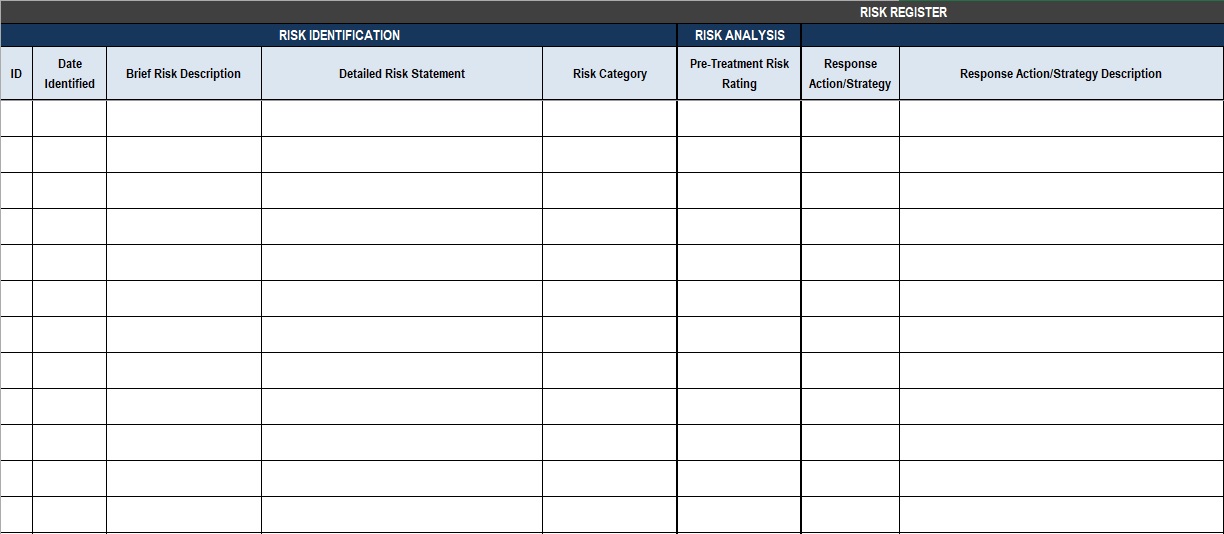
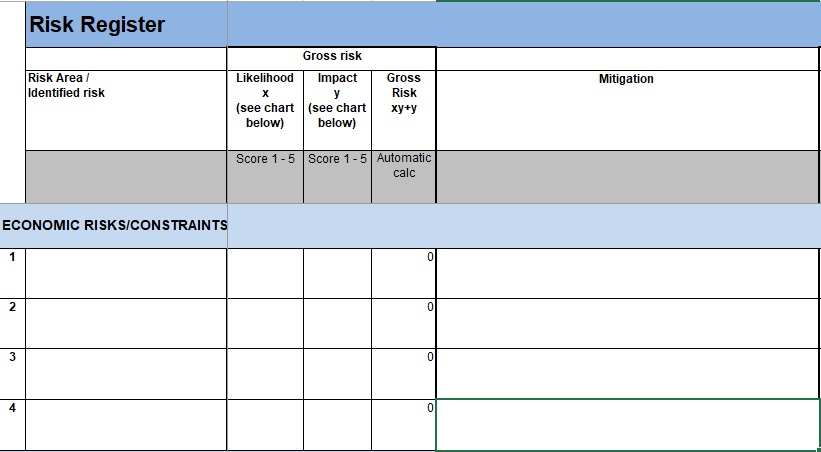
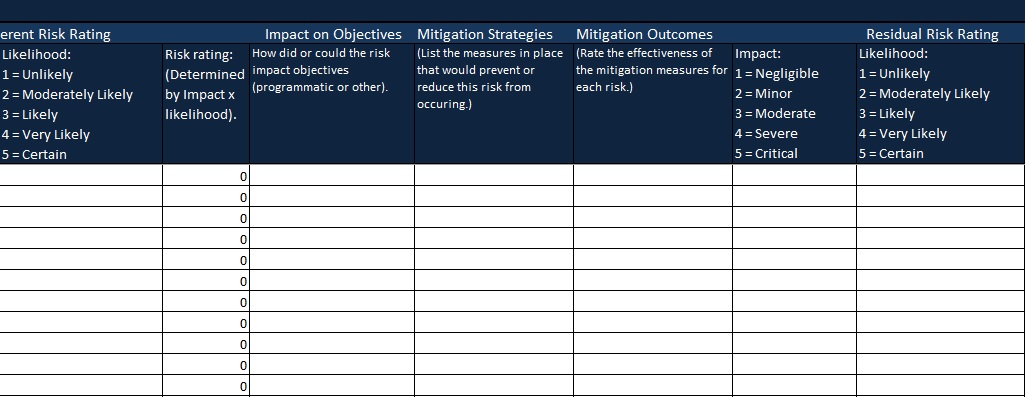
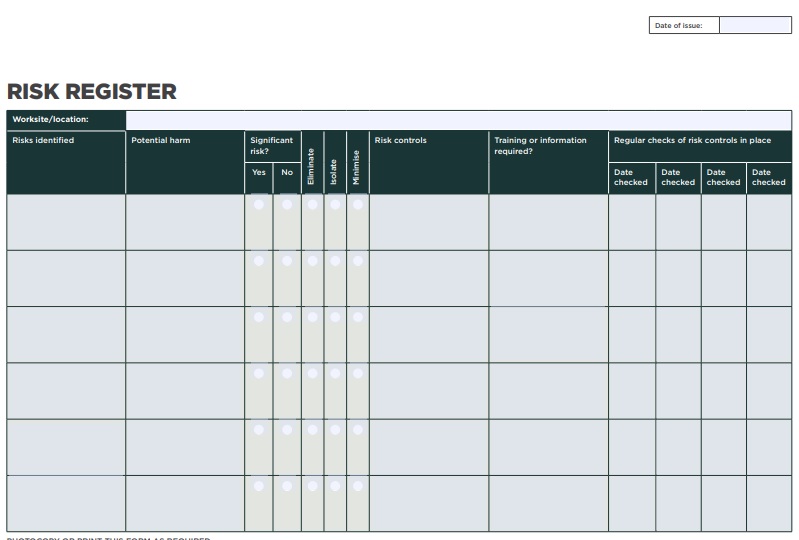
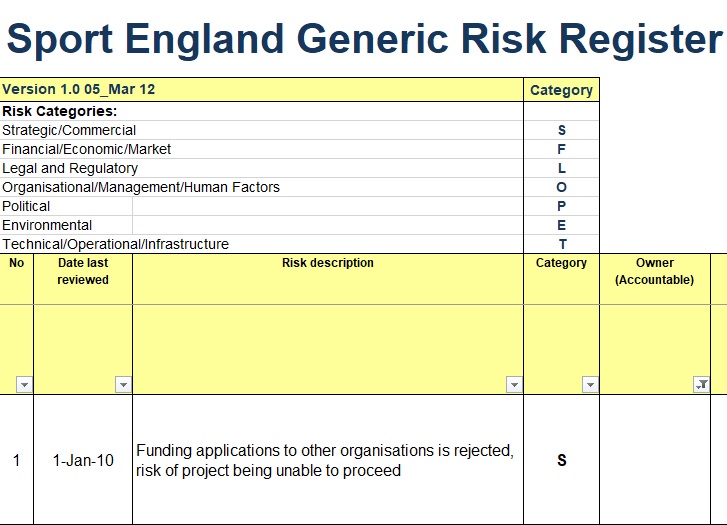

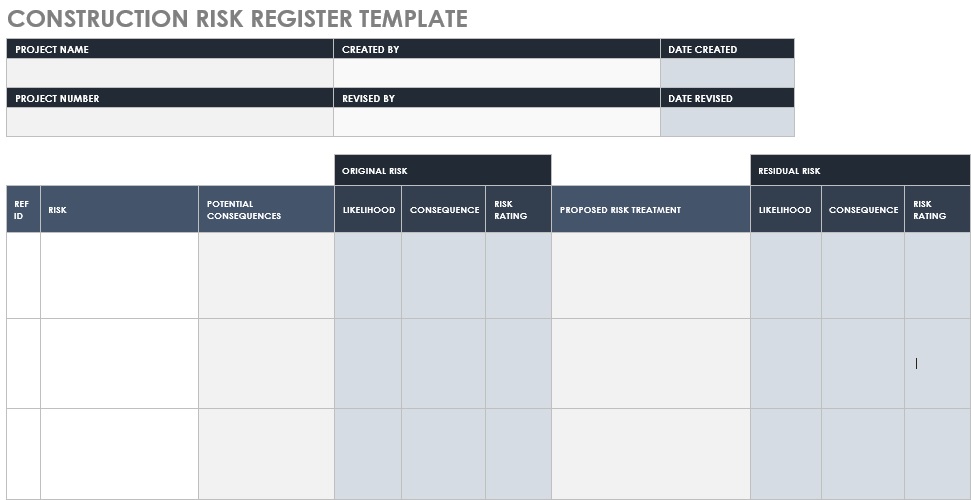
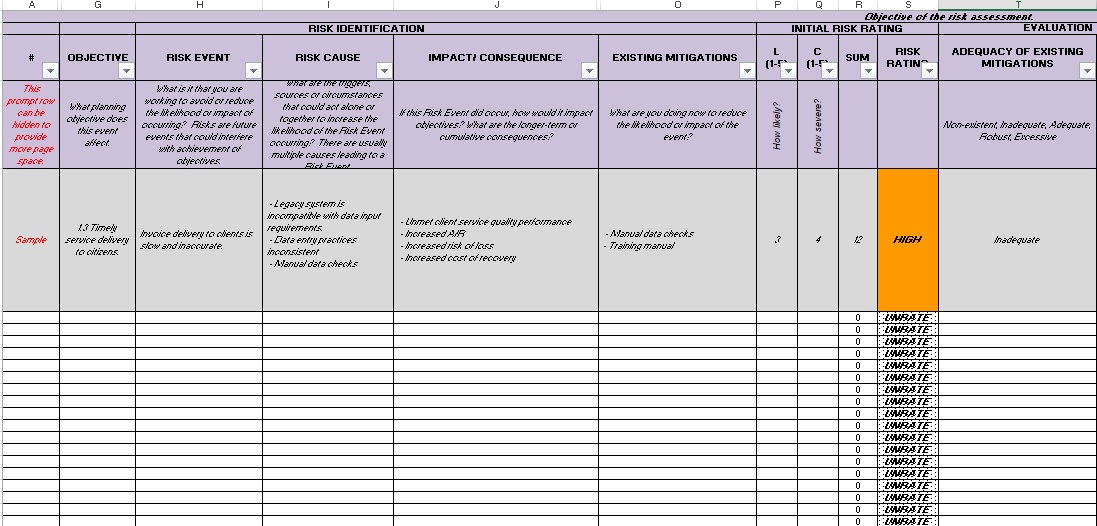
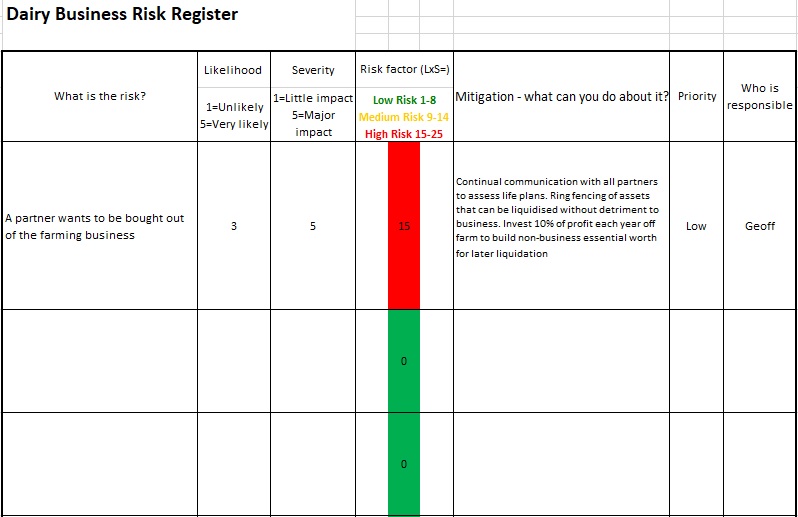

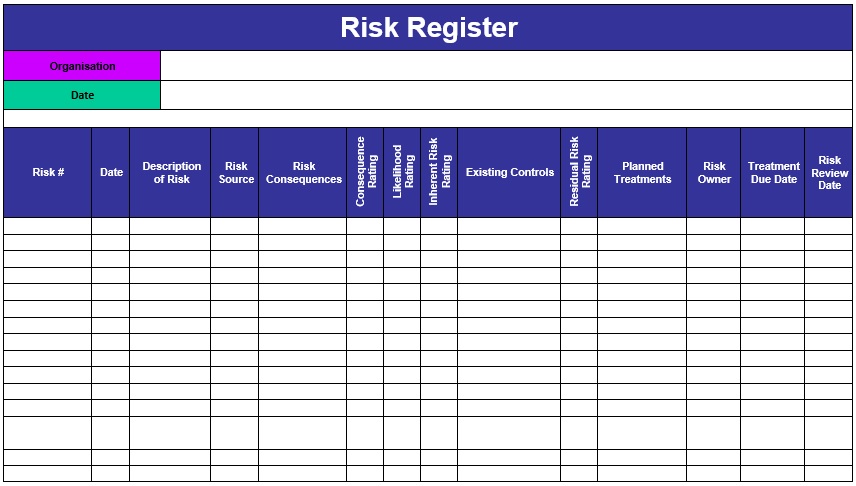
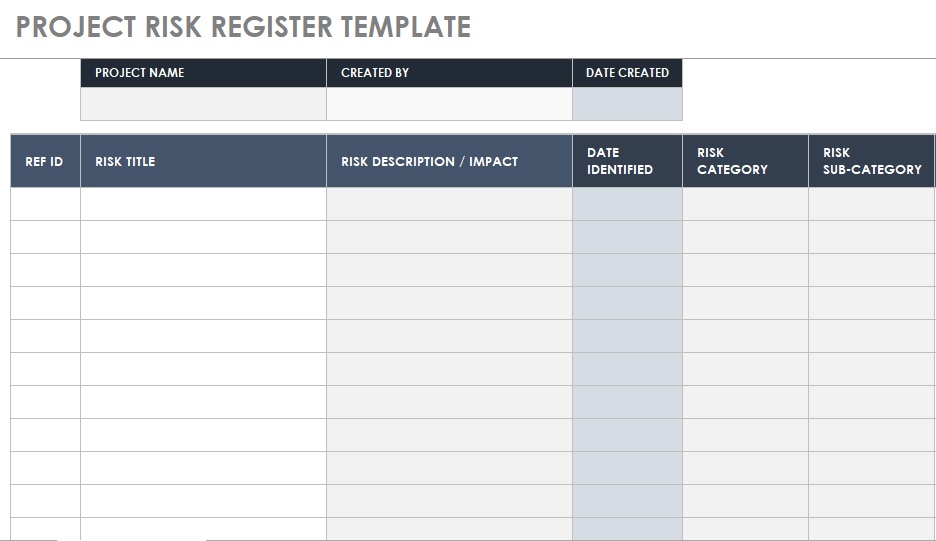
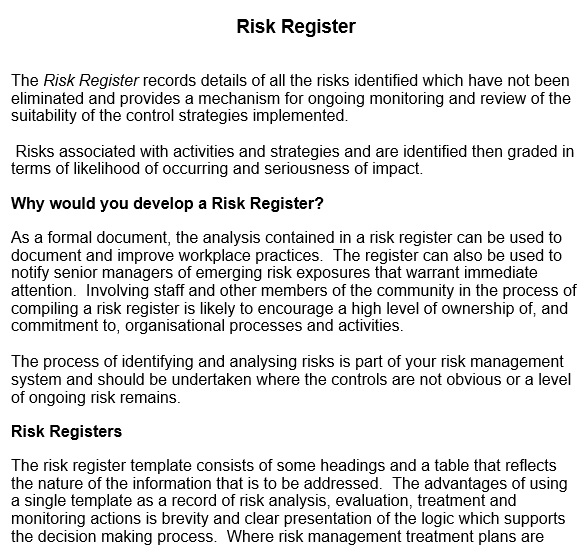

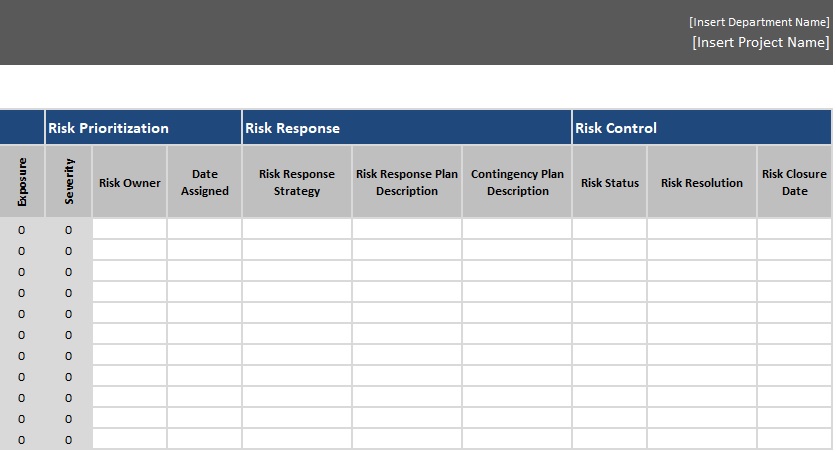
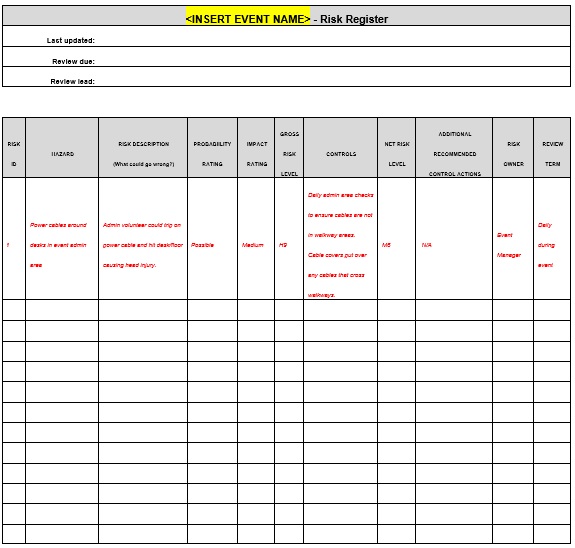
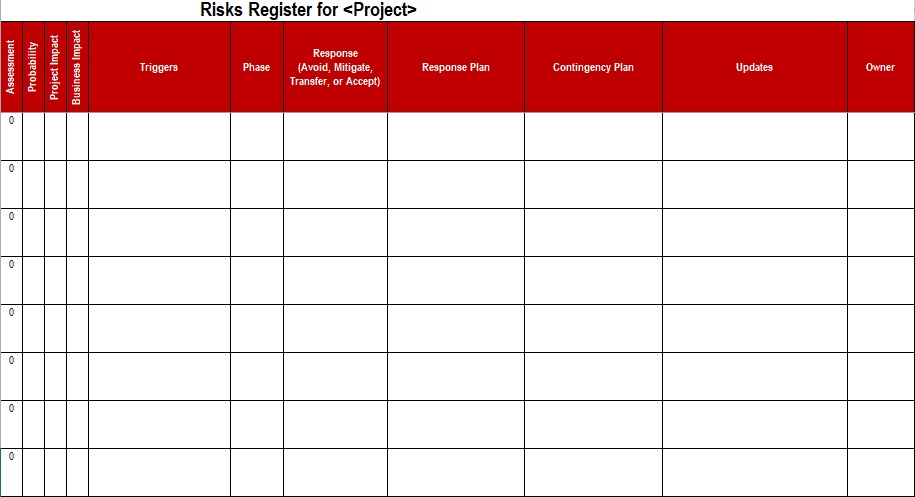
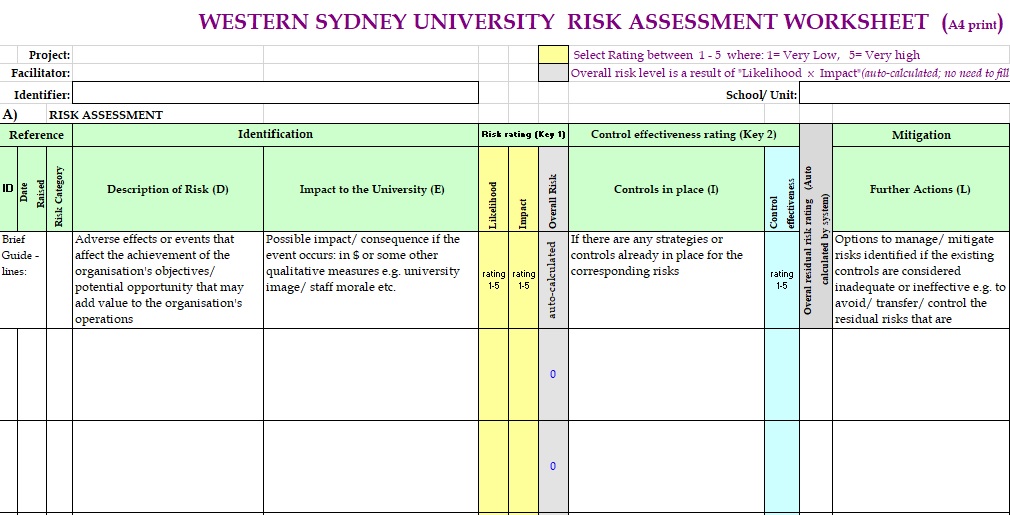
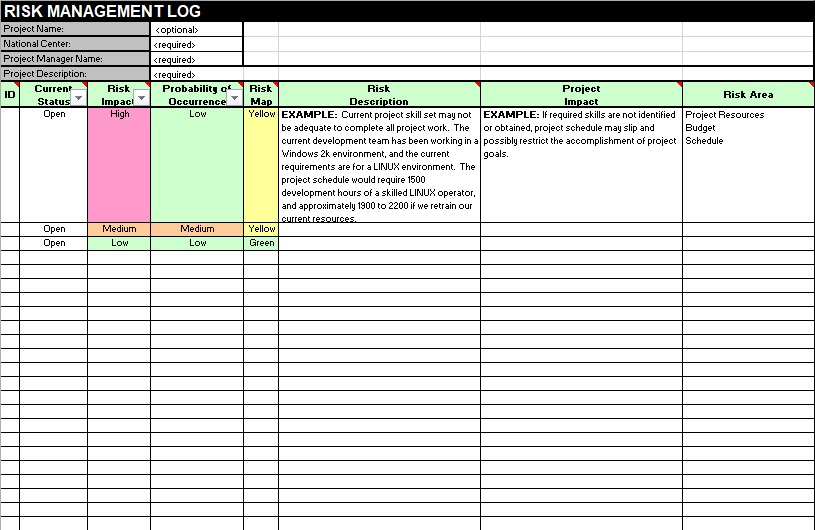
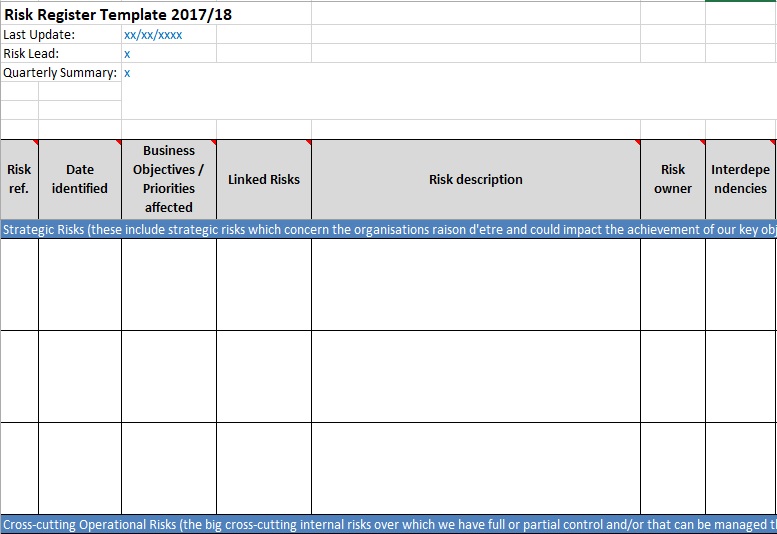
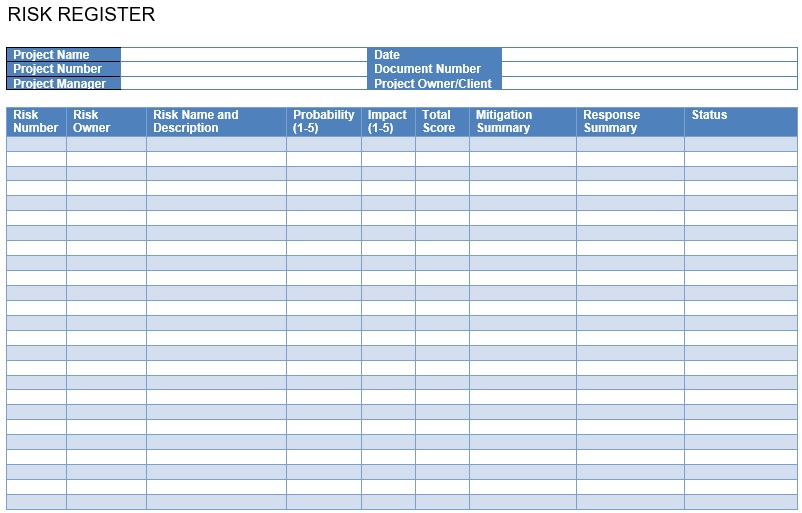

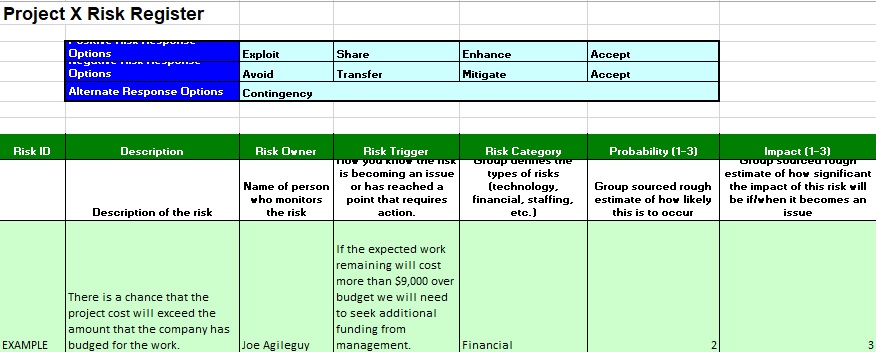
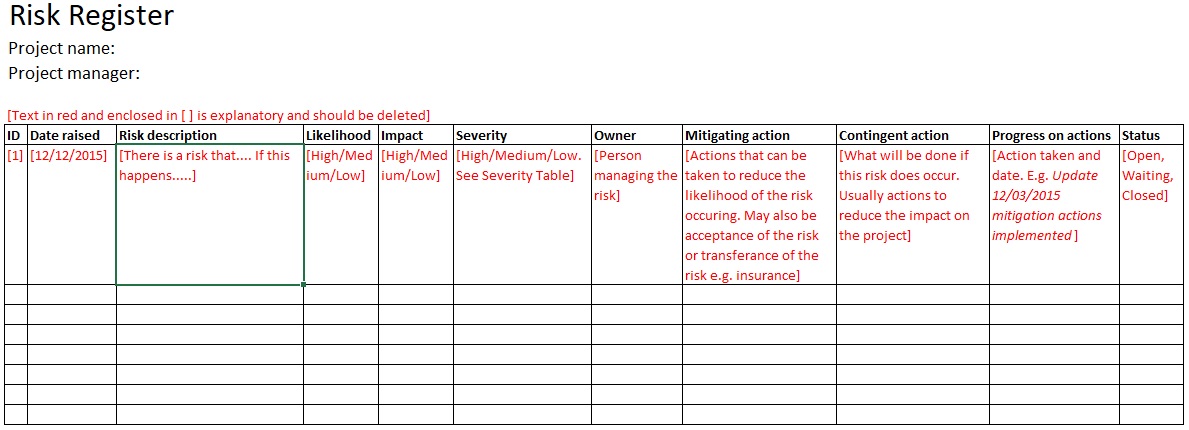
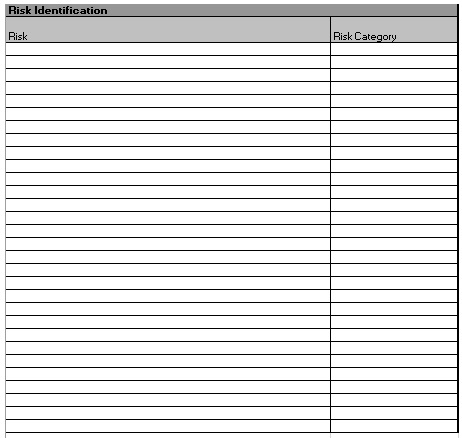
![Project Scope Statement Templates & Examples [Excel, Word, PDF] project management statement of work template 1](https://templatedata.b-cdn.net/wp-content/uploads/2021/05/project-management-statement-of-work-template-1-150x150.jpg)
![20+ Printable Checkbook Register Templates [Excel, Word, PDF] free checkbook register template 4](https://templatedata.b-cdn.net/wp-content/uploads/2021/06/free-checkbook-register-template-4-150x150.jpg)
![20+ Free Printable Address Book Templates [Excel+Word+PDF] free address book template 12](https://templatedata.b-cdn.net/wp-content/uploads/2021/06/free-address-book-template-12-150x150.jpg)
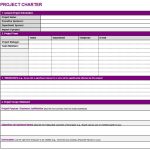
![12+ Free Rent Payment Tracker Spreadsheet [Excel, PDF] free rent payment tracker template 3](https://templatedata.b-cdn.net/wp-content/uploads/2021/10/free-rent-payment-tracker-template-3-150x150.jpg)
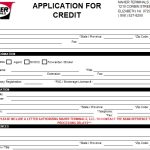
![30+ Printable Medical History Form Templates [Word, PDF] significant medical history template](https://templatedata.b-cdn.net/wp-content/uploads/2021/06/significant-medical-history-template-150x150.jpg)
![20+ Free Printable SBAR Templates [MS Word] free SBAR template 2](https://templatedata.b-cdn.net/wp-content/uploads/2021/08/free-SBAR-template-2-150x150.jpg)